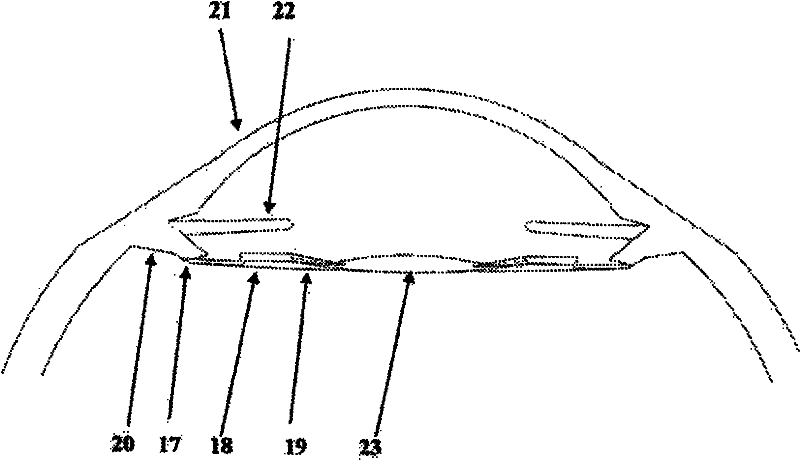Haptic devices for intraocular lenses
A lens, haptic technology, applied in the direction of intraocular lenses, eye implants, etc.
- Summary
- Abstract
- Description
- Claims
- Application Information
AI Technical Summary
Problems solved by technology
Method used
Image
Examples
Embodiment Construction
[0062] Once the natural lens has been surgically removed, the haptic device is used to attach the intraocular lens within the lens capsule. The three specific design goals of the haptics are: i) to allow the lens to be implanted in the eye through an incision of less than about 3mm, by means of a specialized syringe; ii) to allow the lens to move in the posterior chamber of the eye, so that the Provides focus flexibility; and iii) minimizes posterior capsule opacification ("PCO") by attaching the lens to the equator of the lens capsule, a side effect of lens replacement surgery that typically occurs 2-3 postoperatively. Occurs in approximately 50% of patients within a year. Although current IOLs have been successfully implanted for decades, many haptic designs have not yielded the desired reduction in PCO and / or facilitated focus flexibility (or patient adjustment from farsightedness to nearsightedness and minimized exposure to reading glasses). required capabilities).
[00...
PUM
 Login to View More
Login to View More Abstract
Description
Claims
Application Information
 Login to View More
Login to View More - R&D
- Intellectual Property
- Life Sciences
- Materials
- Tech Scout
- Unparalleled Data Quality
- Higher Quality Content
- 60% Fewer Hallucinations
Browse by: Latest US Patents, China's latest patents, Technical Efficacy Thesaurus, Application Domain, Technology Topic, Popular Technical Reports.
© 2025 PatSnap. All rights reserved.Legal|Privacy policy|Modern Slavery Act Transparency Statement|Sitemap|About US| Contact US: help@patsnap.com



